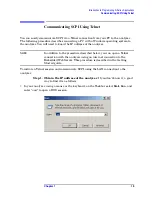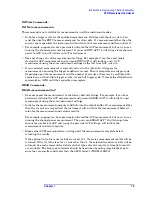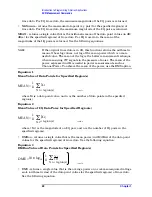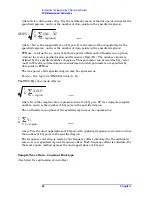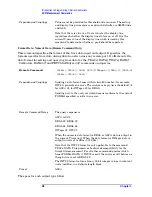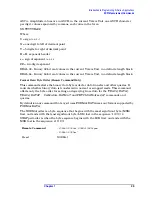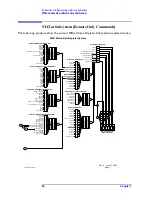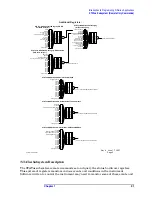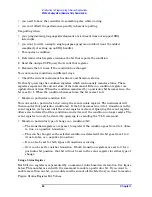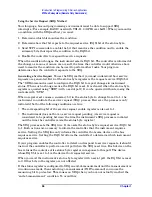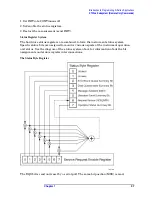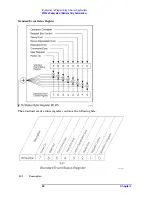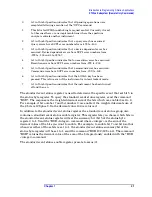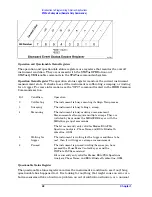
Chapter 1
27
Introduction to Programming X-Series Applications
SCPI Measurement Commands
Example
Example for Swept SA measurement in Spectrum Analyzer Mode:
CALC:DATA4:PEAK? –40,10,FREQ,GTDL This will identify the
peaks of trace 4 that are above –40 dBm, with excursions of at least
10 dB. The peaks are returned in order of increasing frequency,
starting with the lowest frequency. Only the peaks that are above
the display line are returned.
Query Results 1:
With FORMat:DATA REAL,32 selected, it returns a list of
floating-point numbers. The first value in the list is the number of
peak points that are in the following list. A peak point consists of
two values: a peak amplitude followed by its corresponding
frequency (or time).
If no peaks are found the peak list will consist of only the number of
peaks, (0).
Remote Command Notes
<n> - is the trace that will be used
<threshold> - is the level below which trace data peaks are ignored.
Note that the threshold value is required and is always used as a
peak criterion. To effectively disable the threshold criterion for this
command, provide a substantially low threshold value such as –200
dBm. Also note that the threshold value used in this command is
independent of and has no effect on the threshold value stored
under the Peak Criteria menu.
<excursion> - is the minimum amplitude variation (rise and fall)
required for a signal to be identified as peak. Note that the
excursion value is required and is always used as a peak criterion.
To effectively disable the excursion criterion for this command,
provide the minimum value of 0.0 dB. Also note that the excursion
value used in this command is independent of and has no effect on
the excursion value stored under the Peak Criteria menu.
Sorting order:
AMPLitude - lists the peaks in order of descending amplitude, with
the highest peak first (default if optional parameter not sent)
FREQuency - lists the peaks in order of occurrence, left to right
across the x-axis.
TIME - lists the peaks in order of occurrence, left to right across the
x-axis.
Peaks vs. Display Line:
ALL - lists all of the peaks found (default if optional parameter not
sent).
GTDLine (greater than display line) - lists all of the peaks found
above the display line.
LTDLine (less than display line) - lists all of the peaks found below
the display line.

